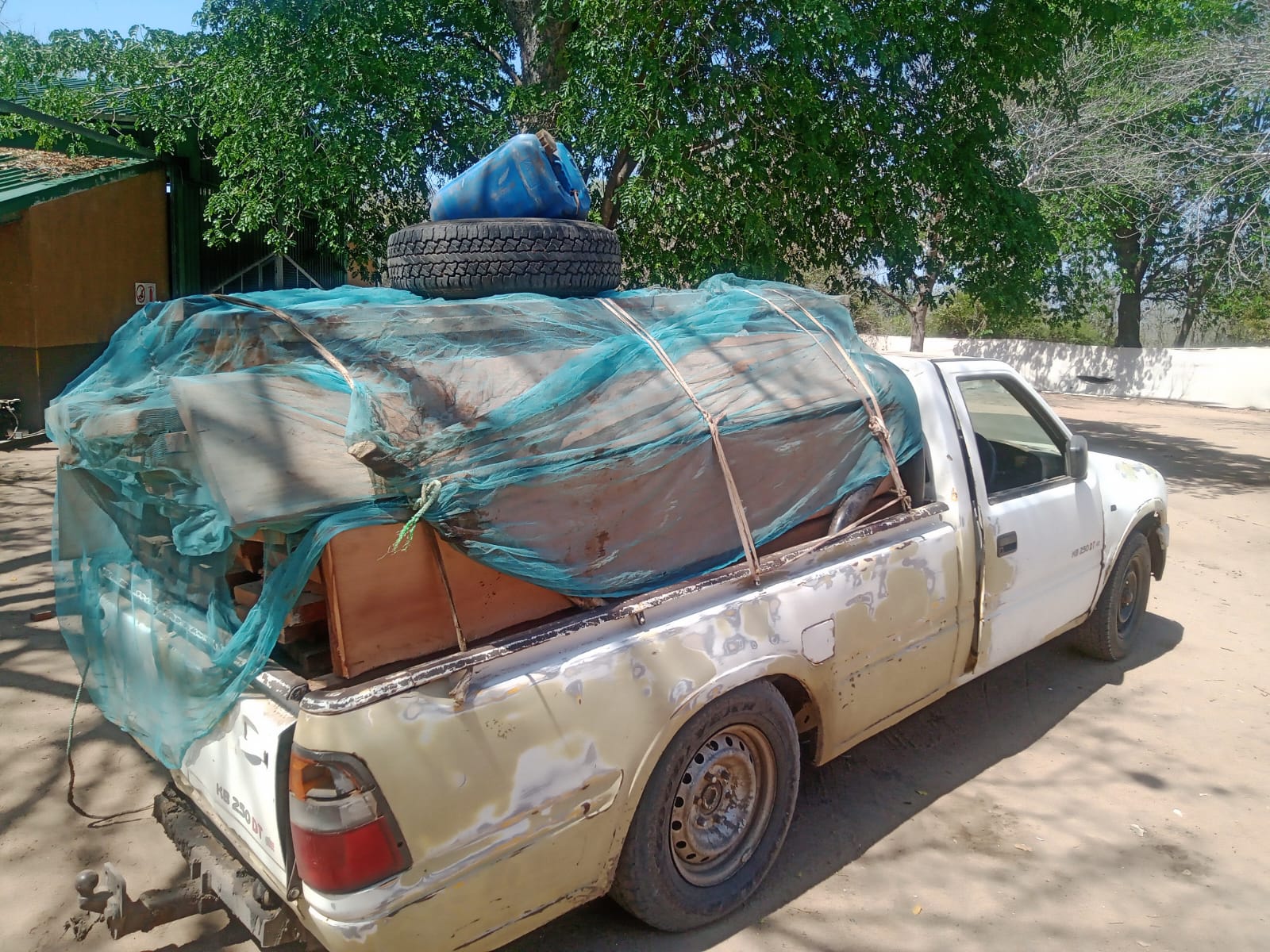In a significant triumph for conservation efforts in Mozambique, illegal logging has been halted in Zinave National Park due to co-ordinated action to disrupt these operations by confiscating equipment and imposing steep fines on those arrested. The focus has now shifted to the buffer zones around the park, and to investments being made in the local communities through employment and outreach and livelihood programmes, to shift the balance towards forest conservation.
Similar tactics to stop poaching of wildlife are now being used to tackle illegal logging, which threatens five key tree species – the highly sought after Pod Mahogany, Leadwood, Mopane, Tamboti and Chacate Preto. Mature trees from these species are integral to the health of forests and ecosystems as birds nest in them, animals live in their hollows, and insects like the Mopane moth live off them. Large trees form a micro-habitat and the loss of key species degrades the entire ecosystem.
Zinave, co-managed by Mozambique’s National Administration for Conservation Areas (ANAC) and Peace Parks Foundation, has arrested 45 illegal loggers this year, up from 24 arrests last year. In addition, cut logs and vehicles have been confiscated.
New rangers focus on logging

“We are continuously coming across illegal logging operations on the outskirts of the park. If we didn’t have the capacity to take prompt action, within two to three years there would be nothing left of the five targeted tree species,” said Bernard van Lente, Peace Parks Foundation’s Head of Operations at Zinave.
When van Lente began working in Zinave in 2016, illegal logging inside the park was rife and there was little capacity to tackle it. Today, any attempted logging within the park is quickly detected and dealt with, moving the focus now towards the surrounding buffer zones.
“We have confiscated a front-end loader and some trucks that are new and expensive, as well as bakkies, rifles and chainsaws,” van Lente said.
“We also impose fines, causing financial and operational damage when we disrupt their operations.”
The confiscated vehicles are released back to the owners once the fines have been paid, while any weapons and cutting equipment remain the property of the government.
Since 2017, ANAC and Peace Parks have boosted field ranger numbers and set up a central operations control room with a digital communications system, elevating the park’s counter-poaching and anti-logging efforts significantly. In addition, vehicles, trucks and motorbikes have been purchased and an airplane and helicopter acquired for aerial surveillance and conservation management. These measures enable better detection of illegal activities and support follow-up actions on the ground. Thirty-two new rangers have been trained and deployed, some of whom will be dedicated to the outlying areas where the illegal logging is concentrated.
How illegal logging is carried out

There are two types of illegal logging taking place, the first of which involves felling trees and cutting them into logs. These are dragged out by tractor to central stockpiles and loaded onto a flatbed 18-wheeler truck at night, for transporting to nearby logging yards. Crime syndicates hire local people to do the illegal logging and take on the associated risks. The loggers inform each other when the rangers are patrolling close by, which means the rangers must work undercover to catch them.
The second type, flat timber logging, involves a small team of people entering the forest on foot, selecting suitable trees and cutting them by hand into boards. The boards are stored until they can fill a pick-up truck then they are extracted at night. The loggers sell the planks to nearby carpenters for furniture, or for export usually to the East. A very small portion of the valuable wood ends up in Mozambique for domestic use, however, as the logging industry is almost exclusively driven by international demand.
Trees disappearing at a staggering rate

While the syndicates operate legal logging concessions, they hire locals to cut down trees in protected areas. As one team can cut up to 50 trees in one night, the rate at which these species disappear is staggering.
“The syndicates create legal logging yards with dimensions of up to 500 m by 500 m and they stack the logs up to 3 m high, which is a lot of wood,” said van Lente. He estimates that thousands of local people are employed in this illicit trade and the level of corruption is high, making convictions difficult.
Zinave works hard to provide alternatives to poaching and illegal logging, by offering employment opportunities like road maintenance and construction work to people residing in the buffer zones, to reduce any reliance on illegal activities for economic survival. In addition, the confiscated logs don’t go to waste. A heartwarming initiative by the park in 2019 was repurposing seized logs into school desks and chairs for primary schools in local communities, where prior to this, most children sat on the classroom floor.
Zinave’s intensive efforts are paying off. Van Lente is confident that with time and ongoing strategic interventions, illegal logging around the park can be wiped out, ensuring that the region’s magnificent trees can fulfil their important role in the park’s ecosystem for future generations.






